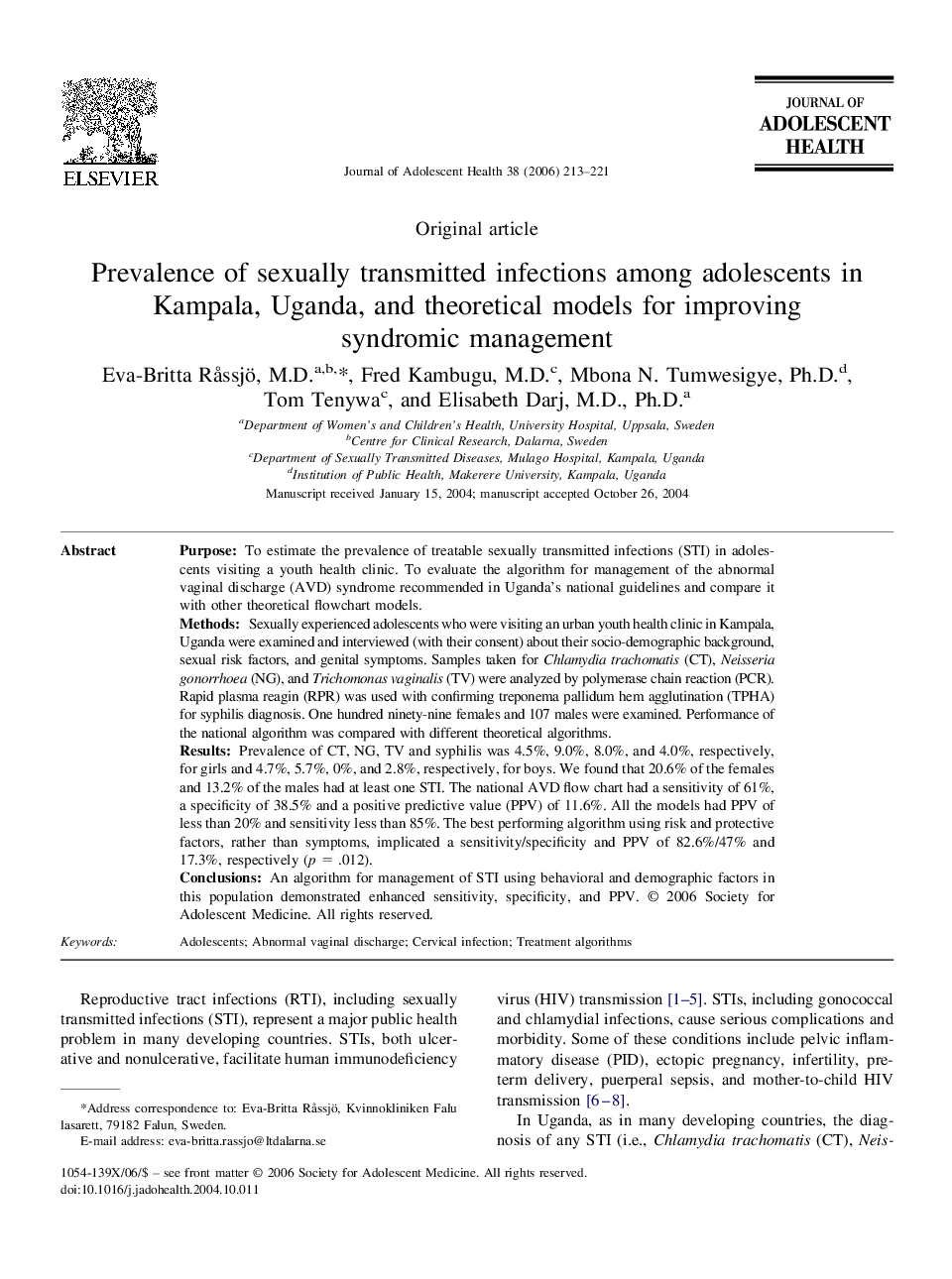| Article ID | Journal | Published Year | Pages | File Type |
|---|---|---|---|---|
| 1081298 | Journal of Adolescent Health | 2006 | 9 Pages |
PurposeTo estimate the prevalence of treatable sexually transmitted infections (STI) in adolescents visiting a youth health clinic. To evaluate the algorithm for management of the abnormal vaginal discharge (AVD) syndrome recommended in Uganda’s national guidelines and compare it with other theoretical flowchart models.MethodsSexually experienced adolescents who were visiting an urban youth health clinic in Kampala, Uganda were examined and interviewed (with their consent) about their socio-demographic background, sexual risk factors, and genital symptoms. Samples taken for Chlamydia trachomatis (CT), Neisseria gonorrhoea (NG), and Trichomonas vaginalis (TV) were analyzed by polymerase chain reaction (PCR). Rapid plasma reagin (RPR) was used with confirming treponema pallidum hem agglutination (TPHA) for syphilis diagnosis. One hundred ninety-nine females and 107 males were examined. Performance of the national algorithm was compared with different theoretical algorithms.ResultsPrevalence of CT, NG, TV and syphilis was 4.5%, 9.0%, 8.0%, and 4.0%, respectively, for girls and 4.7%, 5.7%, 0%, and 2.8%, respectively, for boys. We found that 20.6% of the females and 13.2% of the males had at least one STI. The national AVD flow chart had a sensitivity of 61%, a specificity of 38.5% and a positive predictive value (PPV) of 11.6%. All the models had PPV of less than 20% and sensitivity less than 85%. The best performing algorithm using risk and protective factors, rather than symptoms, implicated a sensitivity/specificity and PPV of 82.6%/47% and 17.3%, respectively (p = .012).ConclusionsAn algorithm for management of STI using behavioral and demographic factors in this population demonstrated enhanced sensitivity, specificity, and PPV.
